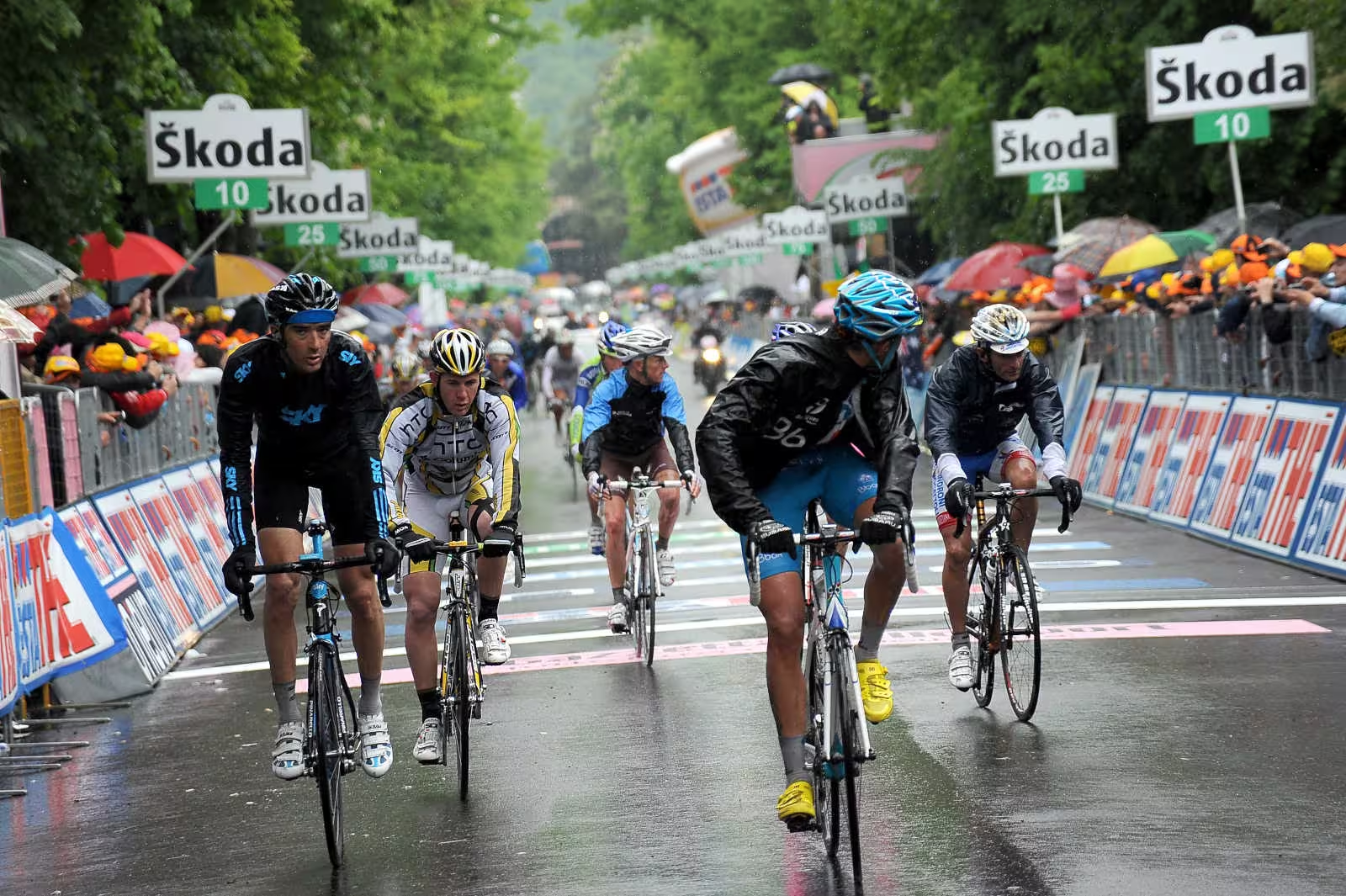We are no longer racing. The lead group has left us and is up the road, under the gaze of the cameras. For now, I ride alone with Christian Vande Velde, through a valley in the depths of the Dolomites. Around us, peaks tower. We have numbers on our backs, food in our pockets, race radios in our ears, yet it feels like it is now just the two of us out on a training ride as there are no riders, team cars, fans, police motorcycles, or race cars in sight. We follow the direction arrows posted on poles if there are no marshals to direct us.
The formation of the grupetto
Both of us had been riding on the front of the peloton, driving it at a stiff pace into the last climb, doing our job for our leaders, Ivan Basso and Paolo Savoldelli, who were battling each other for the race lead. On rival teams, we were now an alliance: two old friends and training partners, trying to make it to the finish line. Through the next valley, the gruppetto, which was still many minutes behind us, would catch us. We would slide into the safety of its slipstream, where there is strength in numbers, to make it to the finish before the axe of the imposed time limit cut off those who couldn’t follow.
Kebabs on the menu in the grupetto?! I wanna be in the grupetto #Giro pic.twitter.com/r1pDLtM8YZ
— Dan Deakins (@DanDeakins) May 12, 2023
The imposed time limit is determined by the average speed of the race winner and the difficulty of the course; on a flat slow stage the limit will be four percent of the winning time, while on a hard mountain stage it can be as much as 20 percent. In certain circumstances, where a rider is struggling due to a crash, the commissaires can extend the limit to 30 percent.
Save energy but make the time cut
On a tough mountain stage, a bulk of the riders aren’t racing for a result but are simply trying to get to the finish line with as much energy as possible to do their jobs for the team in the coming stages. The first thirty or so riders are racing for a result, while the others form alliances to help each other get to the finish line to fight another day. As soon as riders are dropped and are no longer in contention to win, rivals seamlessly become allies.
No longer do they fight for every inch of road, pushing, yelling, cussing at each other, but give way, share water and food, and laugh and chat. They all share a common goal: to make it to the finish line. At the back of the race, the group of riders that progressively pools together to form…
Click Here to Read the Full Original Article at Canadian Cycling Magazine…

